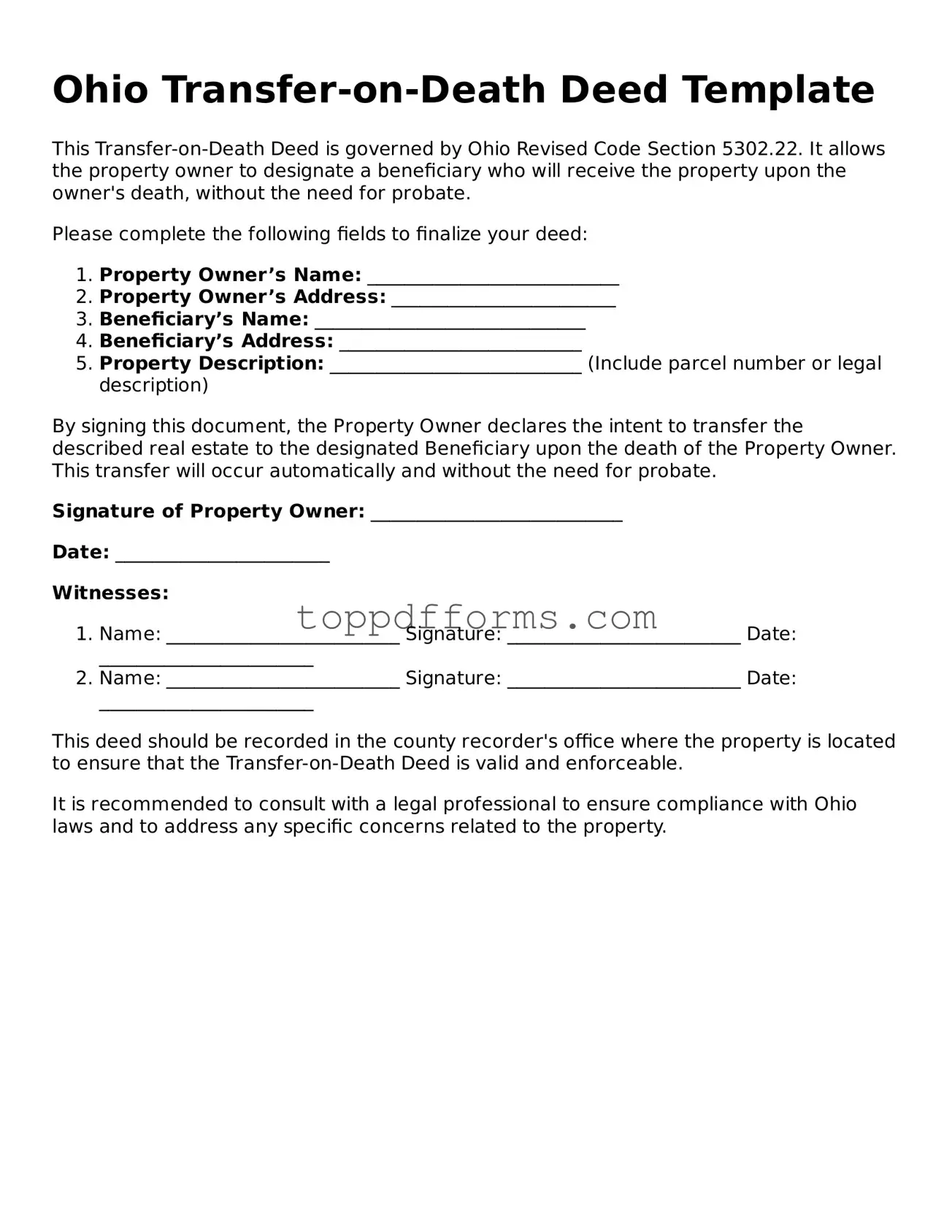Filling out the Ohio Transfer-on-Death Deed form can be straightforward, but several common mistakes can lead to complications. One significant error is failing to include all required information. The form requires specific details about the property and the beneficiaries. Omitting even one piece of information can render the deed invalid.
Another mistake occurs when individuals do not properly identify the property. It is essential to provide a clear and accurate legal description. Using vague terms or informal descriptions can create confusion and lead to disputes among heirs.
People often neglect to sign the deed in the presence of a notary public. The Ohio Transfer-on-Death Deed must be notarized to be legally binding. Skipping this step may result in the deed being challenged or deemed unenforceable.
In addition, some individuals forget to record the deed with the county recorder's office. Even if the deed is properly filled out and notarized, failing to file it can prevent the transfer of property upon death. Recording ensures that the deed is part of the public record and protects the interests of the beneficiaries.
Another common error is not updating the deed after major life events. Changes such as marriage, divorce, or the birth of children can affect beneficiaries. Failing to revise the deed accordingly can lead to unintended consequences, such as excluding someone from inheritance.
Additionally, people sometimes choose inappropriate beneficiaries. It is crucial to select individuals who are reliable and capable of managing the property. Selecting someone who may not be able to handle the responsibilities can create problems later on.
Misunderstanding the implications of the deed is another mistake. Some individuals may not realize that the Transfer-on-Death Deed does not avoid probate for other assets. This misconception can lead to unexpected legal challenges for the estate.
Furthermore, individuals may overlook the importance of communicating their intentions to beneficiaries. Failing to discuss the deed with those involved can lead to confusion and conflict among family members after the property owner’s passing.
Finally, neglecting to seek legal advice can be detrimental. While the form may seem simple, consulting with a legal professional can help ensure that all aspects are properly addressed. This step can prevent mistakes that may complicate the transfer process later on.
